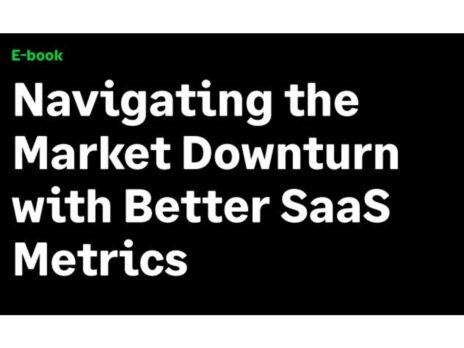
Software-as-a-service (SaaS) adoption continues to grow globally, as organisations of all sizes seek advantages such as cost reductions, flexibility and scalability. Indeed, nearly 78% of small businesses have already invested in SaaS options.
As a SaaS provider, you want to be at the forefront of digital innovation within your organisation, too. As such, FinOps teams in fast-growth SaaS companies need a comprehensive view on billing, cash flow, and forecasting.

However, you can face real obstacles – from centralising the data and accessing current data, to getting a quick close. Here are a few challenges SaaS companies are undergoing, detailed in The 2022 SaaS CFO Guide to FinOps Efficiency.
Many of the top enterprise value-impacting metrics are only calculated 50% to 75% of the time. But with 65% of companies either having or planning usage-based pricing, having a tightly integrated billing platform and financial platform will become table stakes for financial process management and reporting.
Elsewhere, 75% of business leaders said a manual process using spreadsheets was their primary source of performance metrics calculations. Additionally, the largest financial close process challenge was the fragmentation of data sources required for financial reporting.
Similarly, using a manual process was the number two challenge to both the financial close (45%) and metrics calculation (64%). In addition, forecasting, which is primarily owned by finance, uses a manual process in spreadsheets 78% of the time.
This, coupled with the dominance of manual processes for financial reporting, creates significant risk and lost productivity.
Considering these findings, deploying an integrated, centralised environment is imperative. Digitising your core financials can drive digital transformation throughout the organisation, reducing business friction and improving customer experiences, business relationships, and financial results.
Cloud-native financial management systems
This is where cloud-native financial management systems – those that are designed and built in the cloud – can help small and medium SaaS organisations better manage their cash flow, assets and investments to support business planning and decision making. These platforms capture transactional data, automate business processes, and streamline reporting so business leaders can make real-time, data-driven decisions for greater business agility.
Cloud-native finance systems have the benefit of scalability, faster implementations, and more robust integrations with other software.
You also need to have cloud-native financial management system capabilities to automate your operations. Until you can digitally exchange data with other businesses, you don’t have the functionality to adopt digital transformation in other areas of your business.
How are the systems being used?
Successful SaaS companies are seeing the benefits of using modern, cloud-native platforms in areas that include:
- Creating frictionless billing across multiple revenue types, including subscriptions, SaaS, perpetual licensing, channel revenue and professional services
- End-to-end revenue recognition to achieve IFRS 15 compliance
- Integration to automate accounts payables, consolidations, expenses, reconciliations and consolidations
- Understanding trends, identifying issues and finding opportunities with real-time reporting and forecasting while providing predictability to stakeholders
- Scaling with multitenancy, elastic infrastructure, high configurability, self-service expansion, and integration APIs
- Achieving organisational agility with an open and configurable true-cloud solution that reduces dependencies on scarce IT resources
When you move away from manual and traditional processes, you can unlock more potential across your organisation. Your company will be in a better position to manage cash flow, inventory, budgets, accounts payable, accounts receivables, days sales outstanding, and order metrics, while lowering your operating expenses.
Want to find out more? Download this free white paper now:








